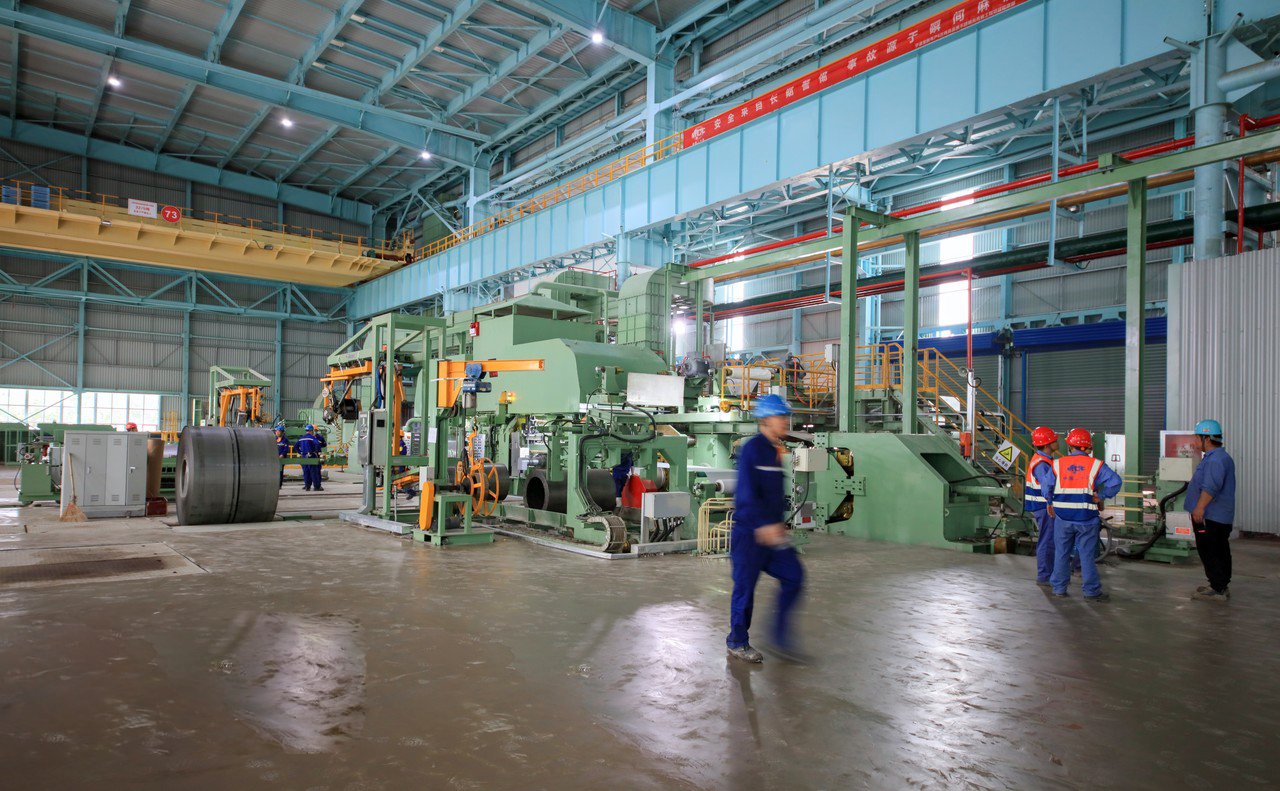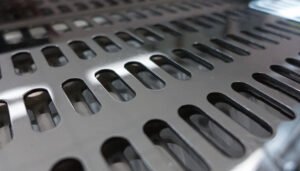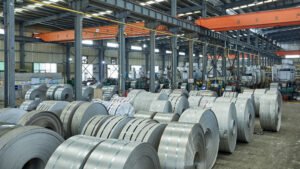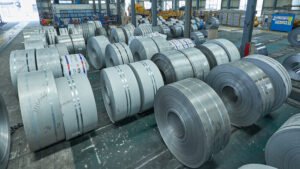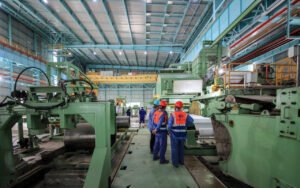Food Processing Lines: Why Stainless Steel Sheet Is the Industry Standard
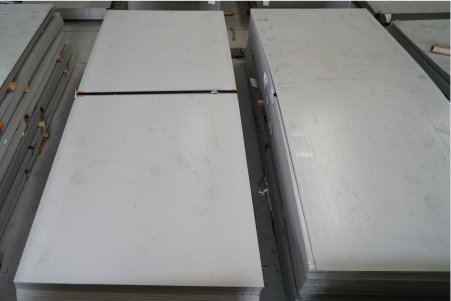
Are you grappling with processing equipment that corrodes, harbors bacteria, or constantly fails hygiene inspections? These challenges not only risk product contamination and costly operational downtime but can also inflict lasting damage on your brand's reputation. Choosing the right material is the foundational step toward a safer future.
Stainless steel is the food processing industry standard due to its exceptional corrosion resistance, non-porous surface that prevents bacterial growth, and high durability. Its chemical inertness ensures it does not alter food taste or color, guaranteeing product purity and consumer safety from production to packaging.
This decision goes far beyond simply meeting regulatory requirements; it's about building a robust foundation of trust with your consumers. The material you select for your processing line has a direct and profound impact on your product's safety, your operational efficiency, and ultimately, your bottom line. Let's delve into why stainless steel consistently stands out as the superior choice for forward-thinking food producers around the globe.
While the benefits of stainless steel appear straightforward, the selection process is more nuanced than it seems. It isn't just about picking "stainless steel"; it's about specifying the correct grade, finish, and fabrication quality for the intended application. For instance, a beverage client of ours initially used a standard grade for processing citrus juices and found unexpected pitting corrosion due to the high acidity. By guiding them to a more suitable, molybdenum-containing grade1, we helped them avert future equipment failure and product contamination. This highlights a crucial point: balancing initial cost against long-term performance and food safety risks requires a deep, symbiotic understanding of both material science and the specific demands of the processing environment. True success lies in this knowledgeable application.
What are the key facts that make stainless steel the industry standard in food processing?
Are you concerned that your equipment materials could be the weakest link in your food safety protocol? The wrong material choice can lead to chemical leaching, accelerated corrosion, and the creation of hidden havens for bacteria to thrive, placing your entire operation and consumer base at risk.
Key facts establishing stainless steel as the industry standard include its superior corrosion resistance, non-porous and smooth surface that is easy to clean and sanitize, and its durability against physical impact and temperature changes. It is also chemically inert, ensuring no reaction with food products.
These properties aren't just abstract scientific terms; they translate into tangible, daily benefits that every production manager and quality assurance team depends on. From the moment raw ingredients enter your facility to their final packaging, the integrity of your equipment surfaces is non-negotiable. In my role at MFY, I’ve had a front-row seat to the transformative impact that a switch to high-quality stainless steel can have on a company's hygiene standards and operational confidence. We’ve partnered with countless clients, from large-scale dairies in India to artisanal sauce makers in Southeast Asia, and the narrative is consistently the same: stainless steel provides a level of assurance and long-term value that alternative materials simply cannot match. It ceases to be just a component; it becomes a core part of the facility's unwavering commitment to quality and safety. This is why I see the investment in the right grade of stainless steel as a direct investment in a brand's promise of excellence to its customers. Let’s break down exactly how these characteristics directly bolster the most critical aspects of modern food production, ensuring your operations are not just compliant, but truly world-class.
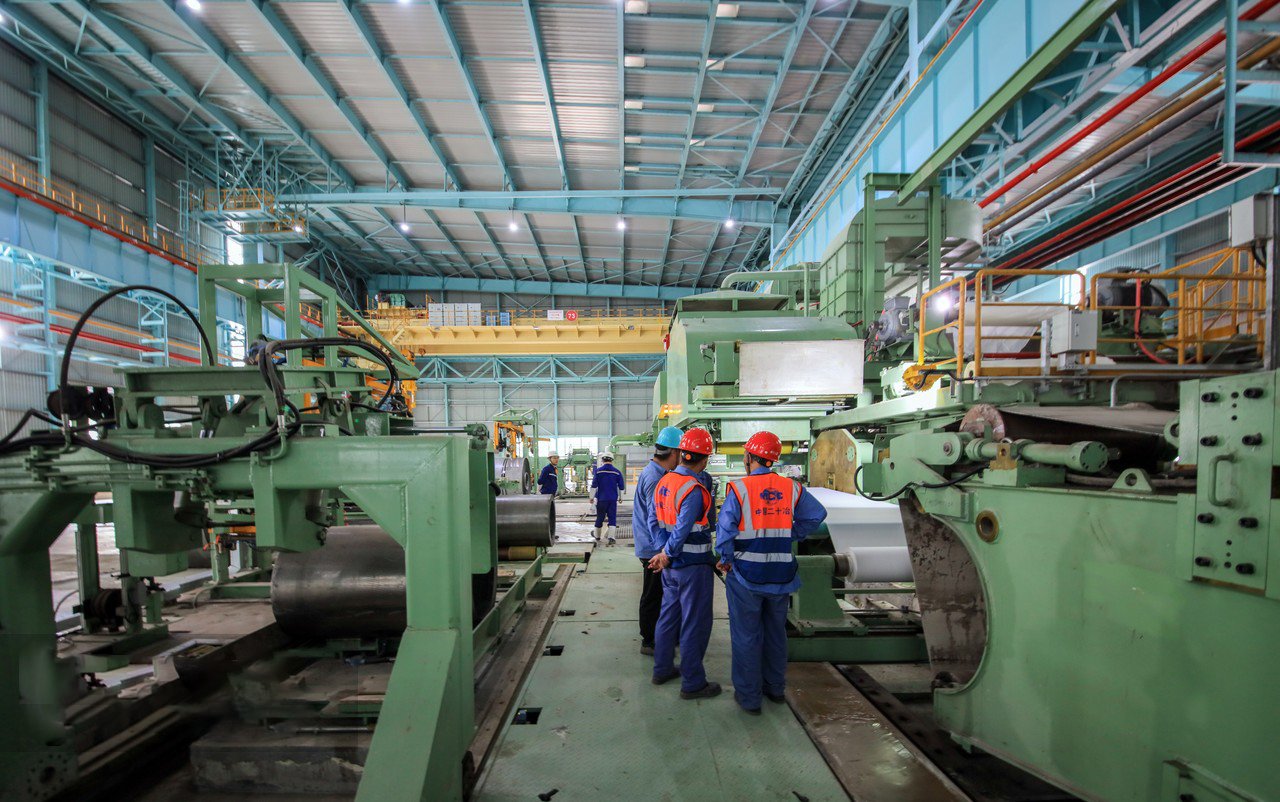
The Unmatched Science of Corrosion Resistance
The primary reason for stainless steel's dominance is its inherent ability to resist corrosion. This isn't just a surface-level benefit; it's a result of its unique chemical composition. Stainless steel contains a minimum of 10.5% chromium, which reacts with oxygen in the air to form a thin, invisible, and incredibly durable passive layer of chromium oxide on the surface. This layer acts as a shield, protecting the underlying iron from rust and corrosion caused by moisture, acids, salts, and other aggressive compounds commonly found in food processing environments. Even if the surface is scratched, this passive layer has the remarkable ability to self-heal almost instantly in the presence of oxygen, ensuring the protection remains intact.
This self-healing property is critical in the real world. I recall working with a new client, "AgroFresh," a growing fruit processing company in Thailand. They were expanding to export canned tropical fruits and juices, which are naturally high in citric and other organic acids. They needed a material for their new mixing tanks and conveyor systems that would not pit or corrode under these acidic conditions, as any metallic leaching would contaminate the product and lead to rejection by international markets. We worked with their engineering team to specify Grade 316 stainless steel sheets2, which include molybdenum for enhanced resistance to chlorides and acids. This choice has ensured the purity of their product and the longevity of their multi-million dollar investment.
The distinction between grades is supported by extensive data. Research from metallurgical institutes clearly shows that while Grade 304 is sufficient for many food applications, environments with high chloride concentrations—found in brines, certain cleaning agents, or even some water sources—necessitate the use of Grade 316. For example, the corrosion rate of 304 stainless steel can increase significantly in saline solutions above 200 ppm chloride, whereas 316 remains stable well beyond that threshold. This data-driven approach to grade selection is fundamental to ensuring long-term asset integrity and preventing costly, unforeseen failures.
A Non-Porous Surface for Ultimate Cleanability
The microscopic topography of a material's surface is a critical factor in food hygiene. Stainless steel, particularly with a smooth finish like a 2B or No. 4 polished finish, possesses an exceptionally low surface roughness. This non-porous, crevice-free surface is its greatest hygienic asset, leaving no microscopic hiding places for bacteria, yeasts, molds, and the biofilms they create. This stands in stark contrast to materials like wood, concrete, or even some food-grade plastics, whose inherent porosity can harbor microbial contamination, making complete sanitation difficult, if not impossible. An effective cleaning protocol can easily remove all residues from stainless steel, ensuring a truly hygienic surface after every cycle.
A powerful example of this is a dairy processing client we supplied in India. Their facility was struggling with persistent issues of biofilm formation on older equipment made from a mix of materials. This was leading to inconsistent product quality and concerns during hygiene audits. After a comprehensive upgrade where they replaced key processing vats and work surfaces with equipment fabricated from MFY's stainless steel sheets with a No. 4 finish, their ATP swab test results—a measure of microbial cleanliness—improved dramatically. The smoother, non-porous surface enabled their standard Clean-in-Place (CIP) systems to work far more effectively, ensuring complete sanitation and giving them the confidence to meet the strictest export standards.
The superiority of stainless steel in this regard is quantifiable, as demonstrated in the table below, which compares typical surface characteristics and their impact on hygiene.
| Material | Typical Surface Roughness (Ra, µm) | Bacterial Retention (Relative Score) | Cleaning Efficacy |
|---|---|---|---|
| Stainless Steel (2B Finish) | < 0.5 | Very Low | Excellent |
| Polished Aluminum | 0.8 - 1.6 | Low | Good |
| Food-Grade Plastic (HDPE) | 1.0 - 2.5 | Moderate | Fair |
| Wood (Unsealed) | > 10.0 | Very High | Poor |
This data underscores why regulatory bodies and food safety standards globally mandate non-porous, easily cleanable surfaces, with stainless steel being the benchmark material.
Exceptional Durability and Thermal Tolerance
Beyond its hygienic properties, stainless steel is renowned for its sheer physical resilience. A food processing plant is a demanding industrial environment, with equipment subjected to constant vibrations, heavy loads, and the potential for accidental impacts from carts, tools, or containers. Stainless steel's high tensile strength and ductility mean it can withstand this mechanical abuse without denting, cracking, or fracturing. This durability ensures a long service life, minimizes maintenance costs, and critically, reduces the risk of foreign body contamination that could result from broken or chipped equipment parts.
Furthermore, its performance across a wide temperature range is unmatched. Consider a client of ours that produces ready-to-eat meals. Their production line involves cooking proteins at over 100°C (212°F) and then moving them to a spiral freezer for flash-freezing at -40°C (-40°F). Our stainless steel conveyor systems, fabricated from MFY sheets, handle this extreme thermal cycling day in and day out. The material maintains its structural integrity and surface properties without becoming brittle at low temperatures or warping at high temperatures, a common failure point for many plastics and a challenge for other metals.
This versatility is rooted in material science. Austenitic stainless steels, the 300-series grades like 304 and 316 most common in food processing, exhibit exceptional toughness and strength at both elevated and cryogenic temperatures. Unlike carbon steels, which can become dangerously brittle when frozen, austenitic stainless steel retains its ductility. This unique characteristic makes it one of the few materials suitable for every single stage of a diverse food processing line, from high-temperature ovens and pasteurizers to deep-freeze tunnels, providing a consistent, reliable material backbone for the entire operation.
Stainless steel resists corrosionTrue
The chromium in stainless steel forms a protective oxide layer that prevents rust and corrosion.
All stainless steel grades are equalFalse
Different grades (like 304 vs 316) have varying corrosion resistance based on their molybdenum content.
How does stainless steel's properties benefit food safety and hygiene?
Are you concerned about passing stringent hygiene audits and preventing the nightmare scenario of a food recall? The smallest imperfection on a food contact surface can quickly become a contamination hotspot, posing a direct threat to public health and your company’s financial stability and reputation.
Stainless steel directly benefits food safety by being non-porous, which inhibits the growth of bacteria and biofilms. Its inert nature prevents any chemical reactions with food, preserving taste and quality. Furthermore, its smooth, corrosion-resistant surface is exceptionally easy to clean and sanitize effectively.
This is precisely where scientific theory meets critical, everyday practice. For any company operating in the food and beverage sector, ensuring impeccable safety and hygiene isn't just a corporate goal; it is the fundamental license to operate. A single recall event can irrevocably destroy a brand's reputation, a reputation that may have taken decades to build. Simultaneously, regulatory bodies across the globe, from the FDA in the US3 to the EFSA in Europe4, are enforcing stricter and more comprehensive standards than ever before. At MFY, we understand that we don't just sell steel; we provide a fundamental component of our clients' food safety and quality assurance systems. I recall working closely with an equipment integrator in the Middle East who was designing a new processing plant for a major snack food brand. The brand's paramount concern was the mitigation of cross-contamination risks between different product batches, especially concerning allergens like nuts and soy. By specifying our high-grade stainless steel sheets for the entire production line, they engineered a system where every surface could be cleaned to a near-sterile state between runs. This level of verifiable, repeatable hygienic control is no longer a luxury—it is a mandatory requirement for any brand with ambitions to compete in the global food market. The link between the material of your equipment and the safety of the food on a consumer's plate is direct and unbreakable.
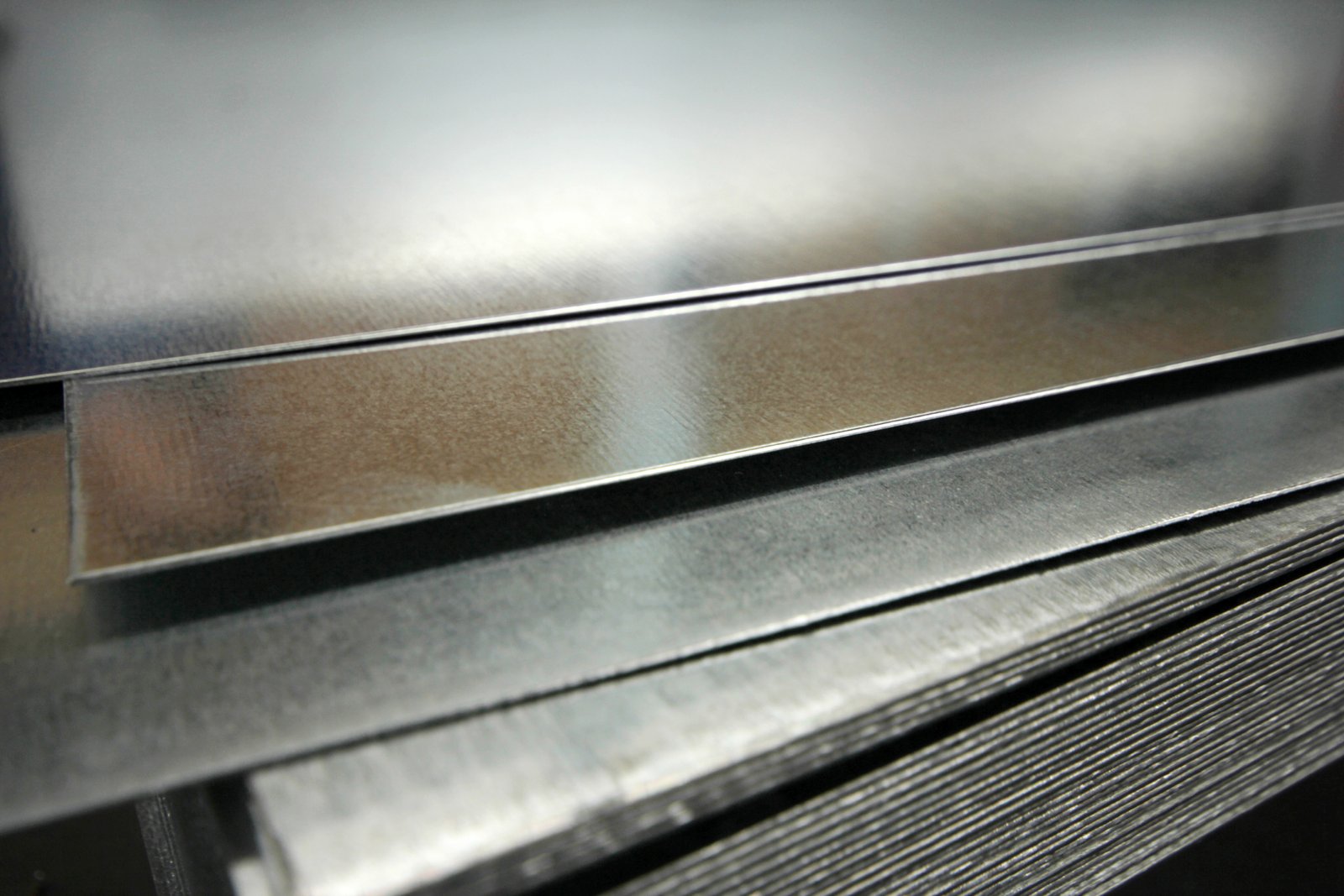
The Critical Role of Inertness in Preventing Contamination
One of the most vital, yet often overlooked, properties of stainless steel in the context of food safety is its chemical inertness. This means that it does not react with the vast majority of food components it comes into contact with. Whether processing acidic tomatoes, alkaline solutions, or complex sauces, the material remains stable. This prevents the leaching of metallic ions or other substances into the food, which could otherwise alter the flavor profile, cause discoloration, or compromise the nutritional value of the product. This is a significant advantage over materials like aluminum, which can react with highly acidic or salty foods, or certain plastics that carry the risk of leaching plasticizers or other chemical compounds over time, especially when exposed to heat or fatty substances.
This inert nature is a cornerstone of consumer trust. We supplied stainless steel sheets to a Russian client who produces a popular, high-quality berry-based beverage. The drink is naturally highly acidic, and during their pilot phase using equipment made from other materials, they noticed a subtle but persistent metallic tang and slight discoloration in the final product. This was unacceptable for their premium brand positioning. After consulting with us, they switched to processing vats and piping fabricated from our 316L grade stainless steel. The "L" signifies low carbon content, which further enhances corrosion resistance after welding. The result was immediate and definitive: the undesirable taste and color issues were completely eliminated, preserving the authentic, natural quality their customers expected and cherished.
This principle is enshrined in global food safety regulations. The U.S. Food and Drug Administration (FDA)5 lists austenitic stainless steel in its Code of Federal Regulations (CFR) Title 21 as a safe food contact surface precisely because of this stability. Rigorous testing has shown that any potential migration of elements like chromium or nickel from high-quality stainless steel into food is negligible and falls far below the tolerable daily intake levels set by health authorities. This regulatory endorsement provides a critical layer of assurance for food producers and consumers alike, confirming the material's suitability for safe food handling.
Facilitating Effective, Verifiable Cleaning Protocols
Modern food production relies on the efficiency and reliability of automated cleaning systems, primarily Clean-in-Place (CIP) and Sterilization-in-Place (SIP) protocols. These systems are designed to clean and sanitize entire circuits of pipes, tanks, and processing lines without costly and time-consuming manual disassembly. They employ a powerful combination of turbulent flow, high temperatures, and aggressive cleaning and sanitizing chemicals. Stainless steel is uniquely suited to withstand this punishing regimen day after day, year after year. Its resistance to both chemical corrosion from detergents and sanitizers and damage from high temperatures is essential for the effectiveness and longevity of these automated systems.
The impact on operational efficiency is profound. We partnered with a large dairy cooperative in Southeast Asia that was looking to upgrade its facility to increase output. A major bottleneck was the time required for cleaning between product runs. We supplied the high-grade stainless steel sheets used to fabricate their new, fully automated CIP system. Because the smooth, non-porous surfaces of the new stainless steel equipment released food soils so easily and resisted chemical attack, the cleaning cycles could be run faster and with greater confidence. Post-cleaning validation using ATP swabs consistently showed microbial loads approaching zero, allowing them to reduce their changeover time by over an hour per day, which translated directly into increased production capacity and revenue.
The effectiveness of cleaning stainless steel is not just anecdotal; it is scientifically proven. Peer-reviewed studies published in the Journal of Food Protection and other leading food science publications have repeatedly quantified the efficacy of biofilm removal from stainless steel surfaces. Research demonstrates that a well-designed CIP protocol can achieve a 5-log to 6-log reduction (a 99.999% to 99.9999% decrease) in bacterial populations on stainless steel. This level of sanitation is the benchmark for meeting the stringent requirements of Hazard Analysis and Critical Control Points (HACCP) plans and certifications under the Global Food Safety Initiative (GFSI), making stainless steel the material of choice for producers committed to the highest standards.
Designing for Hygiene: The Power of Weldability and Fabrication
Superior food safety is not just a result of choosing the right material, but also of designing and fabricating the equipment correctly. A key manufacturing advantage of stainless steel is its excellent weldability. Skilled fabricators can join pieces of stainless steel to create strong, smooth, and continuous welds. When these welds are properly ground and polished, they become seamless with the parent material, creating a monolithic surface. This process is critical because it eliminates the microscopic crevices, sharp corners, seams, and joints that are notorious for trapping food particles and becoming breeding grounds for microbial contamination. A perfectly smooth, continuous surface is a surface that can be perfectly cleaned.
I vividly remember a project with a premier equipment integrator who was building a new production line for a high-care meat processing plant. The design specifications from their end-client were among the most stringent I have ever seen, demanding that all internal corners of tanks, chutes, and conveyors have a specific, continuous radius to prevent any possible point of bacterial accumulation. MFY's stainless steel sheets, known for their consistency and formability, provided the ideal raw material. Their fabricators were able to form, weld, and polish our steel to meet these exacting hygienic design standards, creating a final product that was not only robust but also a model of sanitary engineering.
This ability to create seamless structures provides a stark contrast to other assembly methods. Mechanical fasteners like bolts and rivets, by their very nature, create crevices that are impossible to fully clean. Similarly, the joints and seams in plastic-lined vessels or equipment made from composite materials represent potential weak points for both structural integrity and hygiene. The unique capacity of stainless steel to be welded into a single, crevice-free structure is a fundamental advantage that underpins the principles of modern hygienic equipment design, ensuring that the final product is as safe and cleanable as possible.
Stainless steel prevents bacterial growthTrue
Its non-porous surface inhibits biofilm formation and bacterial colonization.
Aluminum is safer for acidic foodsFalse
Aluminum reacts with acidic foods while stainless steel remains inert.
What evaluations support the widespread use of stainless steel in food processing?
When making a significant investment in your production line, how do you justify the material choice beyond just basic features? Relying on hearsay isn't enough; you need solid evidence from scientific studies, regulatory bodies, and economic analyses to make a truly informed and defensible decision.
The widespread use of stainless steel is supported by evaluations from global regulatory bodies like the FDA and EHEDG, which approve it for food contact. Scientific studies consistently confirm its superior cleanability and biofilm resistance, while economic analyses6 show a lower Total Cost of Ownership (TCO).**
This body of evidence provides a multi-faceted validation that decision-makers can rely on. It’s not about a single opinion, but about a global consensus built on rigorous testing and real-world performance. When I speak with CFOs and operations directors, our conversation often shifts from the per-kilogram price of steel to the long-term value proposition. They need to justify capital expenditures with clear returns on investment, and the supporting evaluations for stainless steel provide exactly that. For instance, a distributor we work with in the Middle East7 uses case studies on Total Cost of Ownership to show their clients—the food manufacturers—how the upfront investment in Grade 316 stainless steel pays for itself through reduced maintenance, longer equipment life, and minimized downtime compared to cheaper alternatives. This data-driven approach elevates the discussion from a simple procurement choice to a strategic business decision. It demonstrates that opting for stainless steel is an investment in operational resilience, brand protection, and sustainable profitability, backed by the full weight of scientific and regulatory consensus.
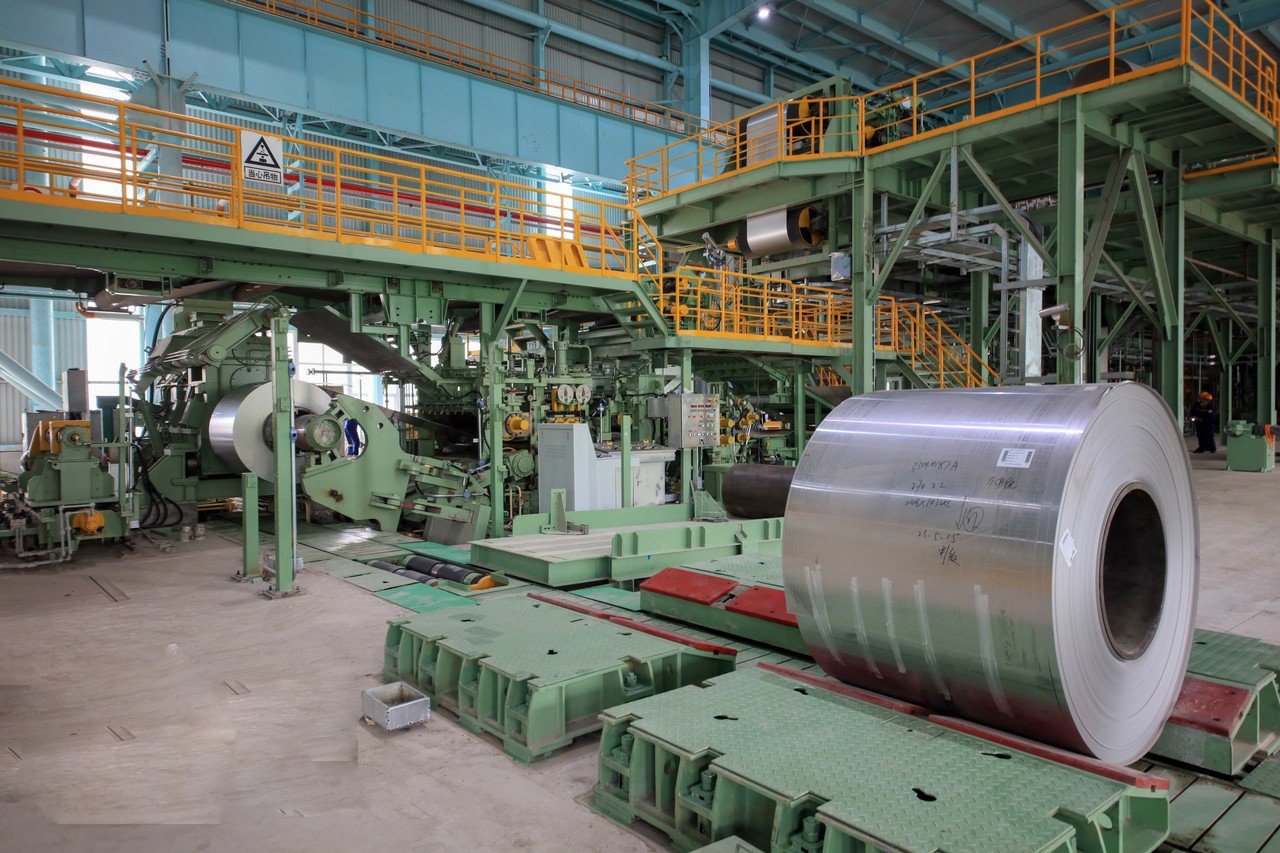
Endorsement by Global Regulatory and Standards Authorities
The most compelling evaluation supporting stainless steel comes from the very organizations that set the rules for food safety. Regulatory bodies and standards authorities around the world have rigorously assessed various materials, and they consistently endorse or mandate the use of stainless steel for food contact surfaces. In the United States, the FDA's Food Code explicitly lists stainless steel as an approved material due to its smooth, easily cleanable surface and resistance to corrosion, pitting, and chipping. Similarly, the USDA provides guidelines for the dairy and meat industries that heavily favor stainless steel equipment for its hygienic properties. This regulatory acceptance is a critical baseline for any food business operating in or exporting to these markets.
In Europe, the European Hygienic Engineering & Design Group (EHEDG) provides guidance on the hygienic design of equipment to prevent food contamination. Their guidelines extensively feature stainless steel as the material of choice because of its fabrication characteristics and performance. Furthermore, independent bodies like 3-A Sanitary Standards, Inc. in the U.S. develop standards for equipment design and fabrication in the food, beverage, and pharmaceutical industries. Achieving a 3-A symbol on a piece of equipment, which is predominantly made of stainless steel, is a mark of high hygienic quality, assuring processors that the equipment is designed for easy and effective cleaning.
These endorsements are not arbitrary. They are based on decades of material science research and practical application in the field. When a company like MFY supplies stainless steel sheets to an equipment fabricator, we are providing a material that is pre-qualified to meet these stringent international standards. This gives our clients—and their clients in turn—the confidence that their equipment can pass audits, meet regulatory requirements, and uphold the highest principles of food safety anywhere in the world. It’s a passport to global markets.
Scientific Studies on Cleanability and Biofilm Resistance
Beyond regulatory approval, the scientific community has provided robust, quantitative evidence of stainless steel's superior hygienic performance. Numerous academic and industry-funded studies have compared the cleanability of stainless steel to other materials like aluminum, plastics, and glass. Using advanced techniques such as ATP bioluminescence and microbial swabbing, this research consistently demonstrates that smooth stainless steel surfaces are easier to clean to a microbial level than more porous or reactive materials. Studies often focus on the removal of resilient bacterial biofilms, which are structured communities of bacteria that are notoriously difficult to eradicate.
For example, a study published in the International Journal of Food Microbiology might compare the log reduction of Listeria monocytogenes or Salmonella biofilms on stainless steel versus high-density polyethylene (HDPE). Invariably, the results show that under identical cleaning protocols, the bacterial reduction is significantly higher on stainless steel. This is because the non-porous surface of the metal provides no microscopic refuge for the bacteria to anchor themselves and evade the chemical and mechanical action of the cleaning process.
This scientific backing is crucial for Quality Assurance managers when developing and validating their HACCP plans. The "C" in HACCP stands for "Critical," and a food contact surface is almost always a Critical Control Point (CCP). Having scientific data that validates the cleanability of their chosen material (stainless steel) allows them to prove to auditors and regulators that their cleaning procedures are effective and their CCPs are under control. This evidence-based approach removes guesswork and replaces it with verifiable science, forming the bedrock of a modern food safety program.
Favorable Total Cost of Ownership (TCO) Analysis
While the initial procurement cost of stainless steel can be higher than that of some plastics or lower-grade metals, a comprehensive economic evaluation reveals a different story. The concept of Total Cost of Ownership (TCO) is a critical evaluation that financial decision-makers use, and it consistently favors stainless steel. TCO considers not only the initial purchase price but also all associated costs over the equipment's entire lifecycle, including installation, operation, maintenance, downtime, and eventual replacement. When viewed through this lens, stainless steel is often the most cost-effective choice.
Let's break it down. Maintenance costs for stainless steel are typically very low. It doesn't require painting or coating like carbon steel, and its corrosion resistance means less frequent repairs or part replacements. Its durability leads to a significantly longer service life; stainless steel equipment can often last for decades, while plastic components may need replacement every few years due to wear, chemical degradation, or embrittlement. The most significant factor, however, is the cost of downtime. A production line shutdown due to equipment failure or a contamination event can cost a company thousands, or even tens of thousands, of dollars per hour. The reliability and cleanability of stainless steel minimize the risk of such costly interruptions.
I often share this perspective with clients who are hesitant about the initial outlay. A client in the bakery sector was considering plastic conveyor belts to save money. We ran a TCO projection with them, factoring in a conservative estimate of biannual belt replacement for the plastic option versus a 20-year lifespan for stainless steel, along with the higher cleaning chemical usage and longer cleaning times associated with plastic. The analysis clearly showed that the stainless steel option would break even in under five years and deliver substantial savings over the following decades. This type of evaluation shifts the decision from a short-term cost consideration to a long-term strategic investment in efficiency and reliability.
FDA approves stainless steelTrue
The FDA explicitly lists stainless steel as an approved material for food contact surfaces due to its hygienic properties.
Plastic outperforms stainless steelFalse
Scientific studies consistently show stainless steel has superior cleanability and biofilm resistance compared to plastics.
What measures should be taken to ensure the longevity and performance of stainless steel in food processing?
You've invested in high-quality stainless steel equipment, but how do you protect that investment? Simply installing it is not enough. Without proper care and handling, even this robust material can face issues, leading to premature failure and compromising the very safety it was chosen for.
To ensure the longevity of stainless steel, one must select the correct grade for the specific application (e.g., 316 stainless steel in high-chloride environments, ensure proper fabrication and welding techniques are used to avoid crevices, and implement strict protocols to prevent chemical and mechanical damage during operation.
Ensuring longevity is an active, ongoing process that begins long before the equipment is even installed. It starts with a deep understanding of your specific processing environment and making the right choices from day one. At MFY, we see ourselves as partners in this process, not just suppliers. It’s our responsibility to help clients navigate these crucial early decisions. I worked with an engineering contractor building a fish processing plant, where the combination of saltwater, cleaning agents, and biological fluids creates an extremely corrosive environment for food processing8. We spent significant time discussing the application before a single sheet was ordered, ultimately recommending a duplex stainless steel for certain high-stress areas, a grade with even higher corrosion resistance than 316. This proactive, consultative approach prevents costly post-installation problems. It’s about building a system that is designed for resilience from its very conception. Protecting your asset is a shared responsibility that marries expert material selection with disciplined operational practices, ensuring performance not just for years, but for decades.

The Critical First Step: Correct Grade Selection
The single most important measure to ensure the long-term performance of stainless steel is selecting the correct grade for the specific application. "Stainless steel" is not a single material but a family of alloys, each with different properties and levels of corrosion resistance. Choosing the wrong grade is the most common cause of premature failure. The two most prevalent grades in food processing are Type 304 and Type 316. Type 304 is the workhorse of the industry, suitable for a wide range of applications. However, it can be susceptible to pitting and crevice corrosion in the presence of chlorides (salts).
This is where Type 316 becomes essential. The addition of molybdenum (typically 2-3%) to its composition gives it significantly enhanced resistance to chlorides. Therefore, any application involving brines (e.g., curing meats, pickling vegetables), saltwater (e.g., fish processing), or the use of chlorine-based sanitizers requires Grade 316. I once visited a potato chip manufacturer who was experiencing corrosion on their 304-grade frying equipment. The cause was traced back to the high salt content of the product. Upgrading the affected components to 316, as we recommended, completely solved the problem. It is imperative that a full audit of the process chemistry—including ingredients, water source, and cleaning chemicals—is conducted to make an informed grade selection.
Beyond these common grades, more demanding applications may require even more specialized alloys. For example, processing highly acidic sauces at high temperatures might call for a grade with higher nickel and chromium content, or even a duplex stainless steel, which offers superior strength and resistance to stress corrosion cracking. As a supplier, our role is to ask these critical questions upfront. We need to understand the chemical concentrations, operating temperatures, and physical stresses the material will face. This initial consultation is not a sales tactic; it is the foundational step in risk mitigation for our clients.
Proper Fabrication, Welding, and Installation
Once the correct grade is selected, the longevity of the equipment is in the hands of the fabricator. High-quality fabrication is paramount. Poor welding, improper surface finishing, or design flaws can undermine the inherent benefits of the stainless steel itself. A bad weld in stainless steel can create crevices9 that trap food particles and become a focal point for corrosion and microbial growth. Furthermore, improper welding techniques can damage the passive layer or lead to "weld decay," where the areas adjacent to the weld lose their corrosion resistance. Using low-carbon "L" grades (like 304L or 316L) is crucial for welded structures, as the lower carbon content prevents the formation of chromium carbides during heating, preserving the material's integrity.
Surface finish is another critical aspect of fabrication. The design should ensure all surfaces are smooth, continuous, and free from sharp corners or dead ends where material can accumulate. All welds must be ground smooth and flush with the surrounding surface, then cleaned and passivated to restore the protective chromium oxide layer. We at MFY supply our stainless steel sheets with protective films to prevent scratching and contamination during handling and fabrication. We also work closely with our equipment manufacturing partners to share best practices on handling and welding to ensure the final product they deliver to the end-user is of the highest possible hygienic quality.
ly, proper installation is key. Care must be taken to avoid contamination with iron particles, a common issue known as "rouging." If carbon steel tools are used on stainless steel surfaces, they can embed tiny iron particles that will later rust, giving the false appearance that the stainless steel itself is corroding. Best practice dictates that a dedicated set of stainless-steel-only tools should be used for installation and maintenance. This simple discipline can prevent significant aesthetic and potential performance issues down the line.
Avoiding Chemical and Mechanical Damage During Operation
After proper selection and installation, the responsibility for longevity shifts to the plant's operational and maintenance teams. The most common operational error is the misuse of cleaning chemicals. Specifically, chloride-based chemicals, like hydrochloric acid or bleach (sodium hypochlorite), should never be used on stainless steel, especially not in high concentrations or for long contact times, as they can aggressively attack the passive layer and cause severe pitting. Maintenance teams must use approved cleaners10 for stainless steel and follow the manufacturer's instructions regarding concentration and temperature.
Passivation, a process that enhances the passive layer, is also a critical maintenance step. While stainless steel naturally passivates, this process can be chemically accelerated using mild oxidizing acids like nitric or citric acid. A newly installed system should always be passivated before its first use. Furthermore, it's considered best practice to re-passivate equipment on a periodic schedule (e.g., annually) or any time after maintenance or mechanical damage has occurred. This chemical treatment removes any free iron from the surface and builds a more robust, uniform, and protective chromium oxide layer, maximizing corrosion resistance.
ly, preventing mechanical damage is crucial. While durable, stainless steel is not indestructible. Dragging sharp or heavy objects across its surface can create deep scratches. While the passive layer will self-heal, a deep gouge can create a site where soils can be trapped and cleaning is less effective. More importantly, using abrasive materials for cleaning, like steel wool or carbon steel brushes, is strictly forbidden. These materials will not only scratch the surface but will also embed iron particles, leading to rust contamination. Only non-abrasive pads, soft cloths, or nylon brushes should be used for manual cleaning to preserve the smooth surface finish that is so vital for hygiene and long-term performance.
316 grade resists chlorides better than 304True
Type 316 contains molybdenum which significantly improves its resistance to chloride-induced corrosion compared to Type 304.
Steel wool is safe for cleaning stainlessFalse
Steel wool can embed iron particles and scratch surfaces; only non-abrasive tools should be used on stainless steel.
What best practice recommendations exist for maintaining stainless steel equipment in food production?
Your stainless steel equipment is installed and running, but how do you keep it in peak condition? Effective maintenance is not about reacting to problems, but about implementing a proactive, disciplined routine that preserves the material's integrity and ensures consistent, hygienic performance every single day.
Best practices for maintaining stainless steel include establishing a written routine cleaning schedule using appropriate non-chloride cleaners, thoroughly training all staff on proper handling to avoid scratches, and implementing a regular inspection and passivation program to proactively manage the equipment's condition and longevity.
These recommendations form a three-pronged strategy for asset preservation: consistent routine, comprehensive training, and proactive inspection. It's a system where each part reinforces the others. At MFY, we often find that when a client reports an issue, it can be traced back to a breakdown in one of these areas. For example, a client in Russia was experiencing minor surface rust, and an investigation revealed that a new sanitation crew was using improper cleaning tools, contaminating the surface. This highlighted the critical need for continuous training. We've since developed simple, visual guideline documents for our clients to use in their staff training sessions. Adopting these best practices is not a burden; it is the most effective way to maximize the return on your significant investment. It transforms the equipment from a passive asset into a reliably performing component of a well-oiled production machine, safeguarding your product quality and your bottom line for the long haul.
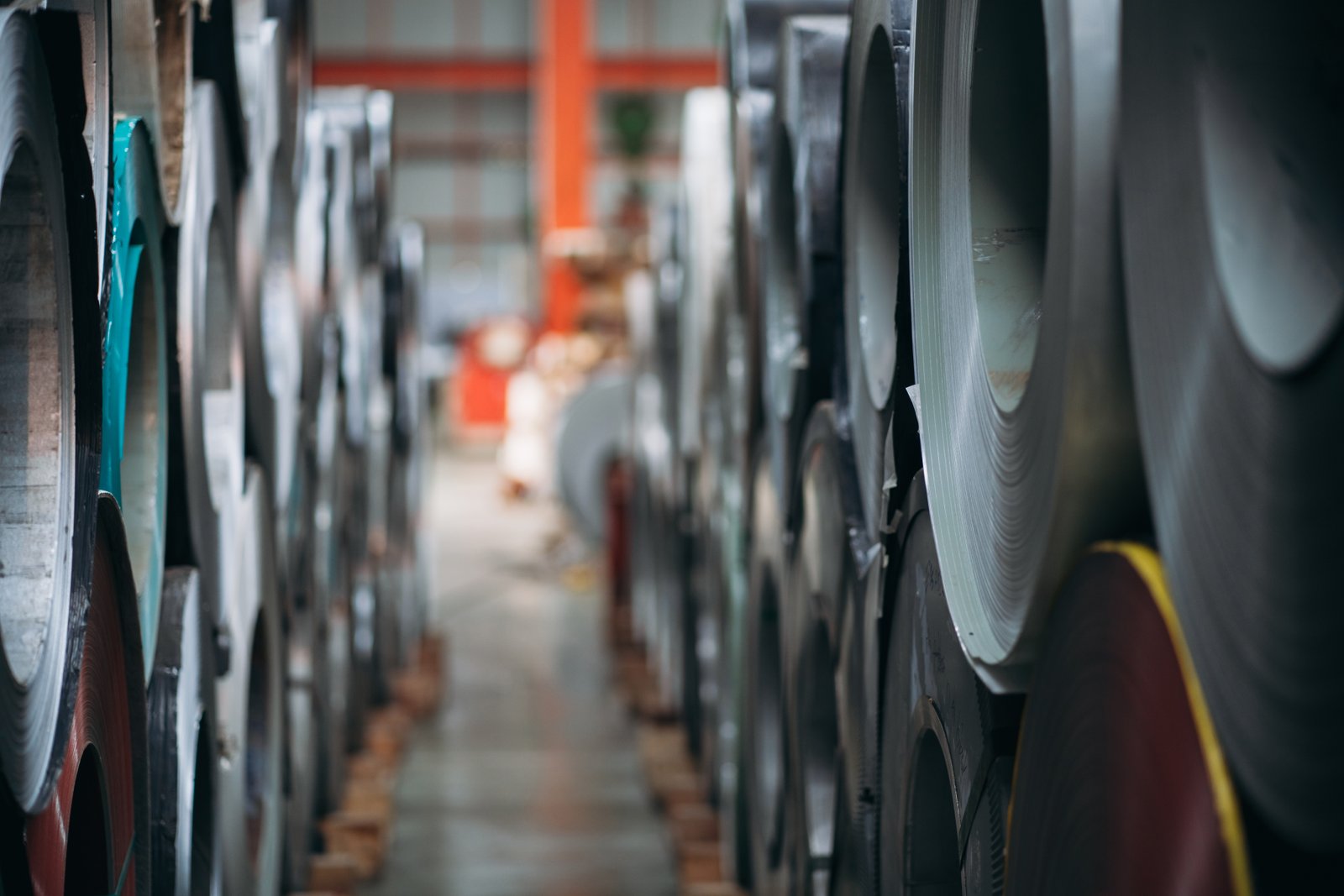
Developing and Adhering to a Routine Cleaning Schedule
The foundation of stainless steel maintenance is a well-documented and rigorously followed routine cleaning program. This is not something to be left to chance or memory; it should be a formal, written Standard Operating Procedure (SOP). The SOP should detail the cleaning frequency (e.g., after every product run, daily, weekly), the specific cleaning agents to be used, their correct concentrations, the water temperature, the contact time, and the rinsing procedure. The principle of cleaning should always be to start with the mildest effective method. For light soils, warm water and a soft cloth might be sufficient. For more stubborn residues, a mild alkaline or non-chloride detergent should be used.
The choice of cleaning agent is critical. As mentioned before, chlorides are the enemy of stainless steel. Therefore, all cleaning chemicals should be vetted to ensure they are free from hydrochloric acid and have low levels of sodium hypochlorite. After any cleaning agent is used, the surface must be thoroughly rinsed with clean water to remove all chemical residues. Leaving cleaning agents on the surface, even approved ones, can lead to concentration via evaporation, which may eventually cause staining or corrosion. The final rinse is just as important as the cleaning step itself.
Furthermore, the direction of cleaning matters. For stainless steel surfaces with a visible grain or polished finish (like a No. 4 finish), all cleaning motions should be made in the direction of the grain, not against it. This prevents micro-scratches that can dull the surface and make it slightly more difficult to clean in the future. This written SOP should be readily available to all sanitation staff, and adherence should be verified through regular supervisory checks and documented in a cleaning log. This creates accountability and ensures consistency, which is the cornerstone of any effective food safety program.
Comprehensive Staff Training on Proper Handling and Care
The most sophisticated equipment and best-written procedures are useless without properly trained personnel. All employees who interact with the stainless steel equipment, from production operators to sanitation and maintenance crews, must be trained on its proper care. This training should be a mandatory part of onboarding for new employees and should be refreshed periodically for all staff. The training program should be practical and clear, using visuals and demonstrations wherever possible. It should cover what to do, and just as importantly, what not to do.
Key training points must include the absolute prohibition of using "regular" steel wool, steel brushes, or abrasive scouring powders. Staff should be shown the approved cleaning tools—soft cloths, nylon brushes, and non-abrasive pads—and be told where to find them. They must understand the importance of avoiding mechanical damage, such as not dropping or dragging heavy tools, buckets, or parts across stainless steel surfaces. A simple rule like "never use a tool made of carbon steel on a stainless steel surface" can prevent countless instances of iron contamination.
Training should also cover basic chemical safety and compatibility. Staff must understand why certain chemicals are forbidden and be able to identify the approved cleaners from their labels. For our part, we at MFY often provide our direct clients with simple "Do's and Don'ts" one-page sheets that they can translate and post in their facilities as constant reminders. Investing in this training pays for itself many times over by preventing costly damage that results from simple, avoidable mistakes. A well-trained workforce becomes the first line of defense in protecting the equipment asset.
Implementing a Regular Inspection and Preventive Maintenance Program
The final pillar of best practice is a proactive approach to maintenance, centered on regular inspection. Instead of waiting for a problem like rust or a product contamination issue to appear, a preventive maintenance schedule should be established to catch potential issues early. This program should involve a designated, trained individual performing a visual inspection of all stainless steel equipment on a regular basis (e.g., monthly or quarterly). This inspection should be documented on a checklist.
The inspector should look for any signs of discoloration, staining, rust spots (which are often from external iron contamination), pitting, or corrosion, paying special attention to welds, corners, and crevices. They should also look for any signs of mechanical damage like deep scratches or dents. Any findings should be documented with photos, location, and severity. Minor issues, like small rust spots from contamination, can often be easily removed with a non-abrasive pad and a recommended cleaning solution, followed by re-passivation of the small area.
Based on these inspections, a schedule for periodic passivation of the entire system should be established. While a brand-new system should always be passivated, re-passivating annually or biennially, or after any significant maintenance, is a powerful preventive measure. This chemical treatment reinforces the protective passive layer, ensuring the equipment maintains its maximum corrosion resistance. This proactive cycle of inspection, minor remediation, and periodic passivation is far more cost-effective than dealing with a major corrosion problem that has been allowed to develop unchecked, ensuring the equipment provides decades of safe and reliable service.
Chlorides damage stainless steelTrue
Chlorides in cleaning agents can cause corrosion and should be avoided in stainless steel maintenance.
Steel wool is safe for cleaningFalse
Steel wool can scratch and contaminate stainless steel surfaces; soft cloths or nylon brushes should be used instead.
Conclusion
Ultimately, choosing stainless steel is a strategic investment in food safety, operational efficiency, and your brand's reputation. Its unique combination of hygiene, durability, and resistance makes it the undisputed industry standard, safeguarding your products, your consumers, and your business's long-term success in the global marketplace.
-
Discover the benefits of molybdenum in stainless steel for enhanced corrosion resistance. ↩
-
Understand the advantages of Grade 316 stainless steel in harsh food processing conditions. ↩
-
Learn about FDA requirements and compliance for food-grade materials ↩
-
Discover EFSA's standards and safety measures for food equipment materials ↩
-
Explore FDA's regulations for stainless steel's role in food safety ↩
-
Understand how TCO calculations justify stainless steel's long-term cost savings in food processing equipment ↩
-
Explore case studies and real-world examples of stainless steel benefits in Middle Eastern food industries ↩
-
Understand the corrosion challenges in food processing environments ↩
-
Discover how improper welding affects stainless steel durability ↩
-
Find best practices for cleaning stainless steel safely and effectively ↩
Have Questions or Need More Information?
Get in touch with us for personalized assistance and expert advice.
